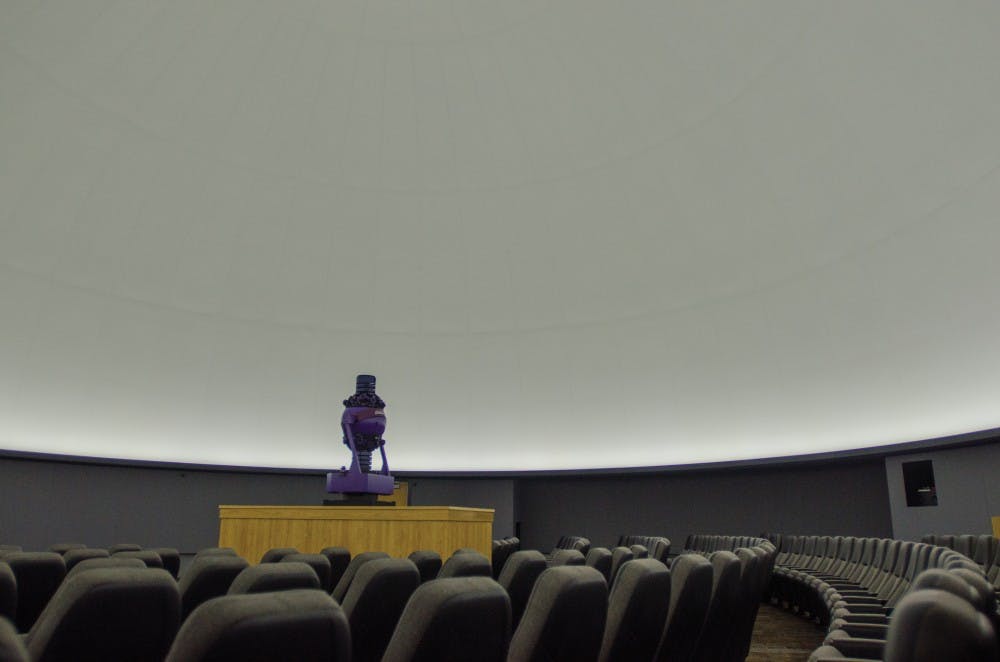The Hybrid Projector:
Two 4K resolution, 60 frame-per-second JVC projectors
An optical mechanical projector
Fiber-optic cables feed the projectors from the computer room
The computers have $5,000 graphics cards and Intel i7 CPUs
Darkness filled the 52-foot theater as the door is. The rings of Saturn exploded out, lighting up the new Charles W. Brown Planetarium.
At 3:30 p.m. Oct. 22, Ball State will cut the ribbon and open the largest collegiate planetarium in the Midwest. It will be second to Chicago’s Adler Planetarium, the oldest planetarium in the western hemisphere. On Nov. 8 the Brown planetarium will open to the public with back-to-back shows for several hours.
“You can bring binoculars in here and look at the Milky Way,” Ronald Kaitchuck, director of Ball State’s planetarium, said.
Walking into the Cindy and Randy Pond Star Theater in the Brown planetarium, the architecture sucks a visitor’s attention to the sterile white dome.
It takes on an illusory form, showing an expansive universe with the new $1.2 million projector in the $5.4 million structure.
Powered by 12 computers – eight for the raw processing power and four managing miscellaneous systems – the new hybrid projection system will show more than 10 million stars; the old 30-foot planetarium built in 1967 showed several thousand.
Behind the 150 seats, a control panel is riddled with labeled buttons. “Saturn Rings” and “Milky Way” stand out.
“They asked us what places we wanted to go with this new projector, and they programmed them into the computer and this console,” Kaitchuck said.
New planetarium shows will require switching between a traditional optical mechanical projector to a digital projector. The traditional projector will be used to look at constellations and different combinations in overlays, 88 to be exact. However, to do the shows involving traveling to the Orion Nebula or the rings of Saturn, the system has to switch over to the digital projectors.
The computers themselves are housed in an ice-cold backroom. R.S.A. Cosmos Planetarium Designer, a French planetarium company, is printed at the top of the computer rack. Each of them is outfitted with a $5,000 graphics cards, allowing stargazers to look at night skies as far back as 10,000 B.C.E.
“In 1952 B.C. there was a conjunction of planets – a period where all the planets line up, more or less – and I was able to punch that in to the panel here,” Kaitchuck said. “It took about five seconds, but there it was. I could cover it up with my thumb. I’ve never seen anything like that.”
The exasperation he felt looking into the past is his favorite part of planetarium shows.
“Anytime we get gaps of disbelief, it’s nice because hopefully they are going to remember that experience,” he said. “I’m hoping they’ll be a lot more of that now.”





